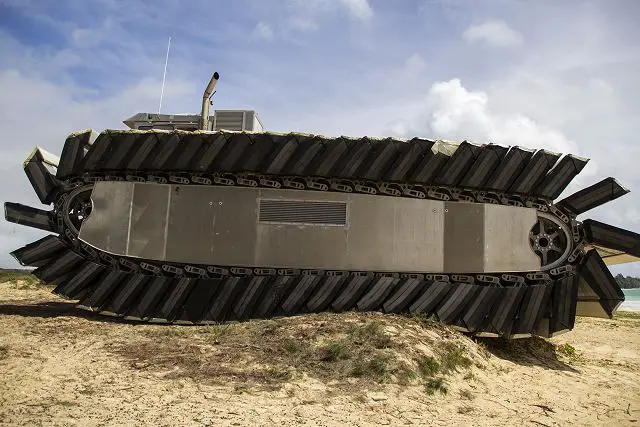| a | |||
UHAC Ultra Heavy-lift Amphibious Connector |
|||
| Friday, July 11, 2014 10:28 AM | |||
| U.S. Marine Corps test new Ultra Heavy-Lift Amphibious Connector UHAC during RIMPAC 2014. | |||
Members
of the U.S. Marine Corps Warfighting Lab (MCWL) tested a model version
of the Ultra Heavy-lift Amphibious Connector (UHAC) at the RIMPAC 2014,
the world's largest international military maritime exercise. The UHAC
is an amphibious craft that has three times the lift capacity and greater
coastal access than the Landing Craft Air Cushion (LCAC.) |
|||
 The Ultra Heavy-Lift Amphibious Connector (UHAC) rolls over a sand dune near the beach at Marine Corps Training Area Bellows on Oahu, Hawaii during a Marine Corps Advanced Warfighting Experiment, July 9. (Photo U.S. Marine Corps Cpl. Matthew Bragg) |
|||
| The UHAC began testing on
July 9 at the Marine Corps Training Area Bellows on Oahu, Hawaii and
it is taking part in the Rim of the Pacific Exercise 2014 which is currently
underway until August 1. |
|||
 The Ultra Heavy-Lift Amphibious Connector (UHAC) comes ashore and traverses various terrains, July 9, at Marine Corps Training Area Bellows on Oahu, Hawaii during a Marine Corps Advanced Warfighting Experiment. (Photo U.S. Marine Corps Cpl. Matthew Bragg) |
|||
| Less
than half the size of the actual UHAC, the Warfighting Laboratory was here
to see their project in action for the first time after years of planning. If the concept model goes through, the UHAC could work side by side with the LCAC, which currently does all the ship-to-shore transportation of everything from High Mobility Multipurpose Wheeled Vehicle (HMMWV) to tanks. “The full-scale model should be able to carry at least three tanks and a HMMVW,” said Gunnery Sgt. Joseph Perera, the lab’s Infantry Weapons Project Officer. “It’s going to save a lot of time and fuel for the Marine Corps as well.” Although the concept model doesn’t appear to be armored well, the final production is planned to have armor plating and .50-caliber machine guns, which Perera says are needed on the UHAC to be able to protect itself. |
|||
U.S. Marine Corps test new Ultra Heavy-Lift Amphibious Connector UHAC during RIMPAC 2014 1107142
- Posted On














